Why are tomato seedlings pale and how to feed them?
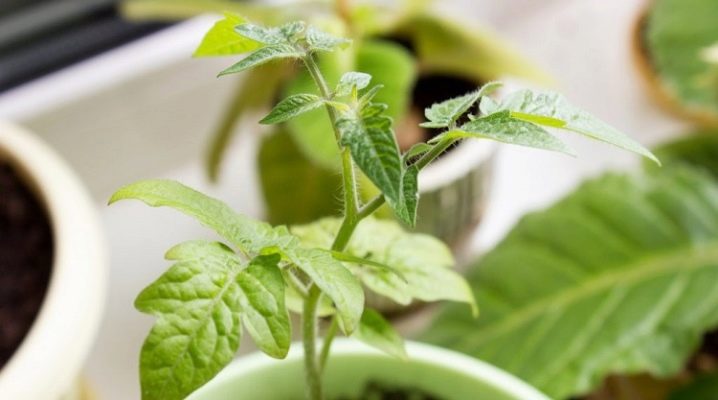
Tomatoes are very popular among gardeners. Starting from the winter months, those who like to feast on their own harvest sow their seeds, try to grow good, strong and strong seedlings for subsequent planting in open ground or in a greenhouse. But sometimes the planting material turns pale and loses its attractiveness. The article will discuss what the reasons may be, and how to fix them.
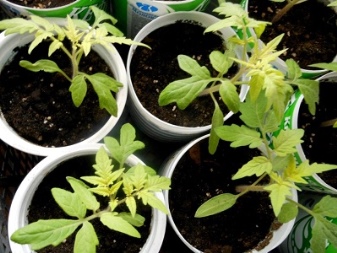
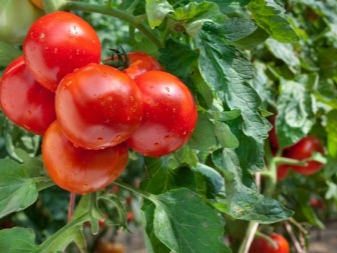
Main reasons
There can be several reasons for the blanching of foliage in seedlings. It is known from biology lessons that chlorophyll pigment is responsible for the green color of plant leaves. Pale seedlings mean that this particular substance is lacking in the plant. If the leaves of the tomatoes have turned pale, have acquired a whitish or yellow tint, it means that changes have occurred in the formation of this pigment. In this case, we can say about the disease chlorosis... If you leave everything as it is, then the tomatoes will die very soon without giving a harvest. Chlorosis can be infectious and non-infectious.
Deficiency of nutrients. It's pretty easy to figure out which nutrients are missing. Several elements are responsible for the green color of the leaves. By the specifics of yellowing and the appearance of the leaves and the whole plant, this is easy to understand. Lack of nitrogen is one of the most common causes of blanching leaves. If a plant has nitrogen starvation, first the lower, older leaves acquire a yellow color, then the planting material begins to slow down its growth. The stem of the seedling becomes thin and frail. It should be noted that in the case of a lack of nitrogen, the leaves turn yellow evenly, and not along the edges, spots or streaks. With a deficiency of potassium, a yellow border is formed at the edges of the leaf - to be more precise, the tips of the leaves turn yellow. Gradually, a so-called burn may form at the edge of the sheet, but the center of the sheet remains green. Lack of iron also negatively affects the seedlings. Deficiency symptoms - the young upper leaves of the seedlings become yellowish. At the same time, the veins of the leaves do not lose their dark green color. Subsequently, the seedlings become sluggish and frail. With a lack of manganese, small light yellow spots appear on the leaves of tomatoes, but the veins continue to remain green.
Insufficient lighting. Tomatoes are a light-loving culture, so quite often the seedlings begin to wilt if they lack light. It happens that due to a lack of illumination, the seedlings are very stretched upward, and the lower leaves began to turn yellow. Too bright lighting is also not very good for seedlings. If the planting material is grown on a window, then the bright spring sun, if it hits the young leaves directly, can cause burns to the leaf plate. In this case, the leaves are covered with white dry spots, which subsequently turn the leaves into "parchment paper." The seedlings themselves in this case become very pale and gradually turn yellow.
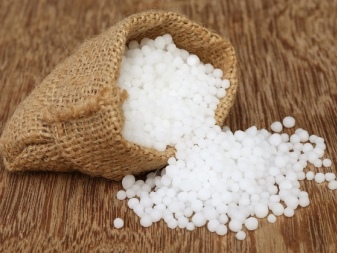
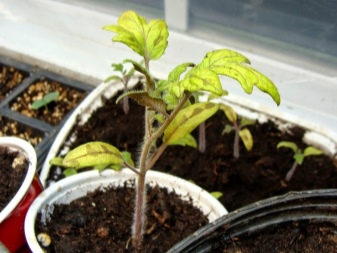
The next reason for the wilting of seedlings can be considered improper watering. Both the lack of moisture and its excess can become the basis for the acquisition of yellow seedlings. In these cases, the tomatoes begin to turn yellow from the lower leaves. With a lack of moisture, the leaves first wither and hang, then begin to dry. With excessive moisture, the seedlings turn yellow, but do not dry out.
The seedlings are too densely planted. With too much thickening of crops, young seedlings begin to turn yellow already at the first stage of leaf appearance. Such plants experience not only a lack of space, but also a lack of light, nutrients and moisture. Such tomatoes do not look very attractive, they become frail, thin, the lower leaves turn yellow, and the upper ones become light green and have a yellowish tint. In the future, as the culture grows, the situation is even more aggravated. The root system grows and begins to function worse. Improper feeding can also cause seedlings to turn yellow. At the same time, young tomatoes become weak, thin and have a greenish-yellow tint.
Incorrectly selected soil. The soil for growing tomato seedlings must correspond to a slightly acidic composition. With the wrong soil selection, seedlings are deficient in nutrients and suffer from this. The leaves begin to turn yellow, wither and then dry out. The stems become thin and stretch upward. Wrong pick. After the procedure for diving seedlings, it becomes sluggish for a while. If everything is done correctly and accurately, then after a certain period the seedlings will regain their strength of growth, and they will take on their former fresh appearance.
If the roots are severely damaged during the dive, the plant will gradually wither. Yellow spots appear on the leaf plate, which gradually cover the entire leaf and gradually dry out.
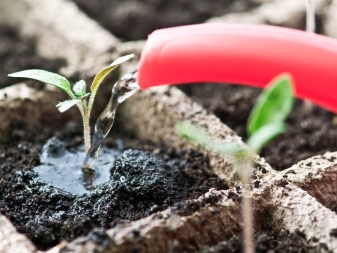
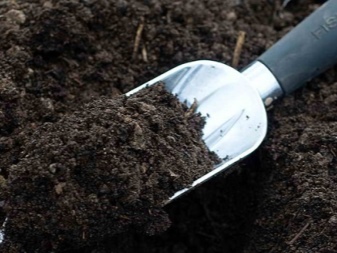
Dealing with the problem
If you notice that the tomato seedlings have become thin and pale green, then something needs to be done about this problem. First of all, you need to find out the reason for this, then proceed to eliminate it. You need to solve the problem quickly in order to have time to save the future harvest.
Correction of mistakes in care
If tomato seedlings have lost their appearance due to damage to the root system, then this is easy to fix. The soil in which the culture is planted must be treated with any rooting agent and watered. After a while, the plant will return to normal, continuing to delight gardeners. Improperly selected soil can also be brought back to normal.
If the soil is alkaline, then it will be enough to water it with a solution of nitric or phosphoric acid. To do this, make a solution: in 10 liters of water, 3.5 cubes are diluted (using a syringe) of a suspension of the substance. Acidic soil can be brought back to normal with a solution with the addition of ash. But for this you need to be sure that the pH level in the burnt leaves is normal.
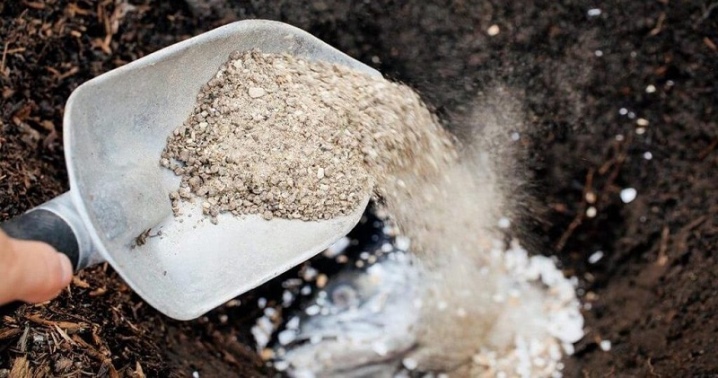
The soil with excess moisture must first be dried... To do this, drainage holes are made in the bottom of the container with seedlings so that excess moisture can freely go away. If after a while the seedlings remain lethargic and pale green, then they should be fed a little. With a lack of moisture, the problem is easier to solve: the soil should be moderately moistened. Usually these plants return to their normal form very quickly. Dry leaves, if they appear, should be removed.
When lack of lighting it is necessary to provide plants with supplementary lighting up to 15-16 hours a day on the northern windows and 14-15 on the south side. In addition, to enhance the illumination, a mirror, reflective foil or film is used. It is strengthened behind the seedlings. On cloudy days, the supplementary lighting can be increased. In most cases, this becomes the decisive factor in eliminating this problem. To prevent sunburn, the culture is recommended to be removed to a bright place where direct sunlight does not fall. After solving the problem, the tomatoes are returned to their original place of cultivation.
Seedlings are densely planted... To eliminate this cause, the seedlings dive into separate, more spacious containers.
To avoid stressful situations after picking, tomatoes are fed and treated with special preparations. Zircon and Epin are well suited for this.

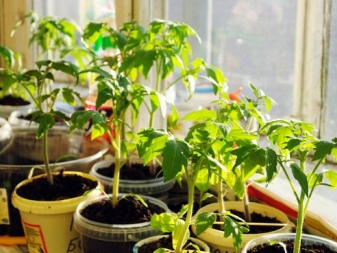
Top dressing
Top dressing of seedlings is carried out in several stages.
- After the appearance of the second or third true leaf, the first feeding is carried out.
- After 10 days, the plant should be fed a second time.
- The third feeding is also carried out 10 days after the second.
- The last feeding of seedlings is carried out about 1.5 weeks before planting the plants in the ground.
The optimal fertilizer that cannot harm the seedlings is any organic matter in suspension. You can buy the drug at any specialized store. When breeding, you must strictly follow the instructions, water it like regular water. After that, lightly sprinkle the soil with ash - this will be another top dressing. It is not recommended to use mineral fertilizers, since if such substances are used incorrectly, the delicate root system of tomatoes can burn out.
Fertilizing crops can be carried out not only by introducing nutrients into the soil, but also by spraying the plant. To replenish nitrogen, an infusion of mullein is used. The bucket is filled with cow dung by 1/3 and filled with water to the top. After 2 days, the infusion can be used, but it must also be diluted: 1 liter of infusion is taken for 10 liters of water.
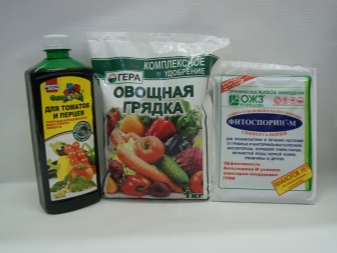
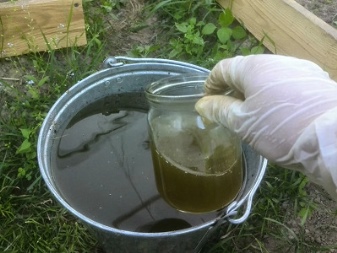
Prevention measures
The best preventive measures are correct and thorough agronomic care:
- regularly and moderately water the tomato seedlings, carefully making sure that the land is not overdried or waterlogged;
- the next day after watering, the soil is necessary loosen up with a toothpickso that a hard crust does not form, which can impede the supply of oxygen to the roots of the plant;
- it is better to use purchased soil, all the necessary trace elements are already balanced in it;
- two weeks after diving the culture into the ground apply mineral fertilizers with a high nitrogen content;
- attentively monitor the lighting;
- keep the air temperature within + 21 ... 22 ° С.
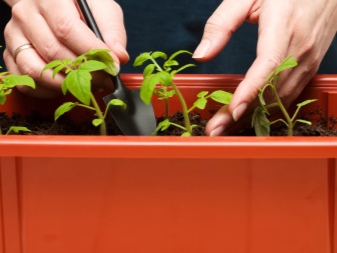
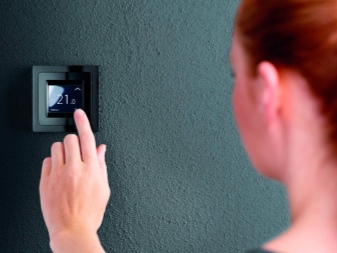













The comment was sent successfully.